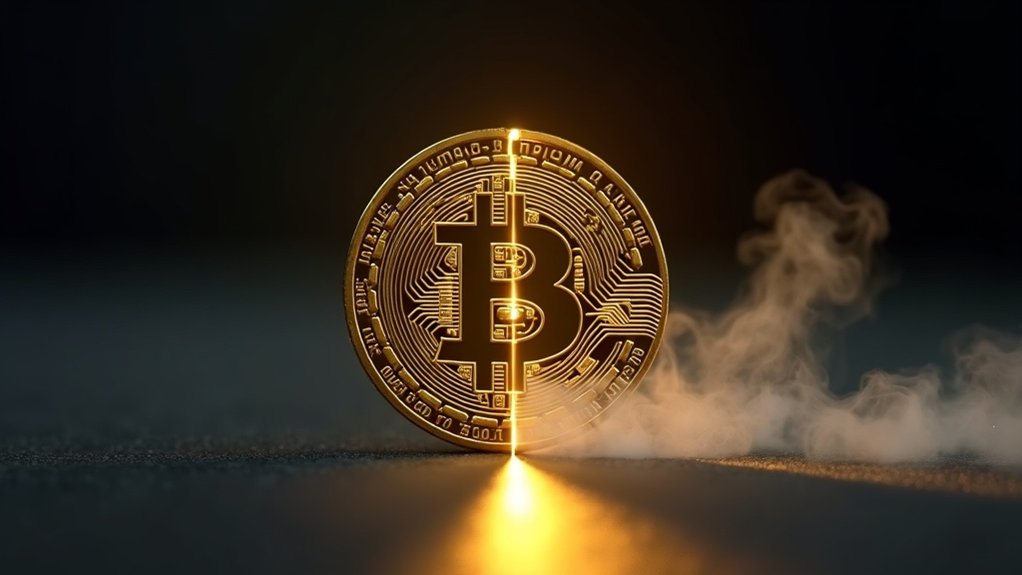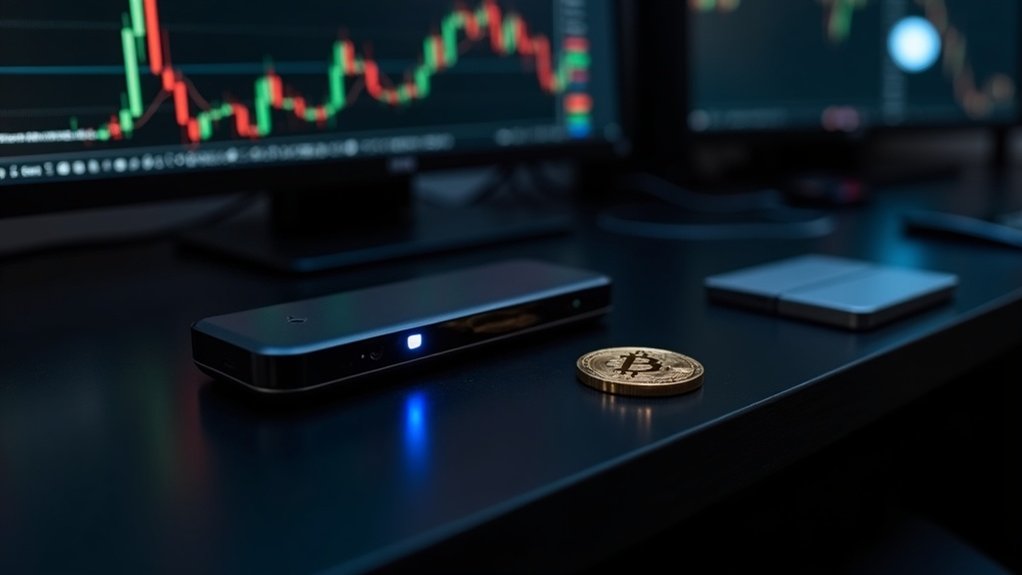Bitcoin halving slashes mining rewards in half every four years, creating a supply shock that historically drives up prices. After the 2012 halving, Bitcoin surged from $12 to $1,100. The 2016 event triggered the famous 2017 bull run. Most recently, the 2020 halving pushed Bitcoin to nearly $15,000 within six months. Price peaks typically appear 365-550 days post-halving. Miners initially struggle with reduced revenue, but network recovery follows. The pattern keeps repeating—until it doesn’t.
As Bitcoin completes its fourth halving cycle, investors and crypto enthusiasts find themselves witnessing a familiar pattern unfold. Every four years, like clockwork, Bitcoin’s code executes its preprogrammed supply shock. Less new Bitcoin. Same demand. Do the math.
The numbers don’t lie. After the first halving in November 2012, Bitcoin skyrocketed from a measly $12 to over $1,100 within a year. Not too shabby for a digital currency most people dismissed as internet money.
From $12 to $1,100 in one year—pretty impressive for something dismissed as mere internet money.
The 2016 halving set the stage for the legendary 2017 bull run, when crypto became dinner table conversation and everyone’s taxi driver suddenly had investment advice.
Then came 2020. Global pandemic. Economic uncertainty. Bitcoin halved again. Within 180 days, it hit $14,849, eventually reaching new all-time highs. See the pattern yet? These price peaks aren’t immediate—they typically materialize between 365 to 550 days post-halving. Patience pays, apparently.
It’s simple economics, really. Cut the new supply in half—from roughly 900 new bitcoins daily to 450—while demand stays steady or increases. The mining reward decreased from 6.25 to 3.125 BTC in April 2024, further tightening the supply. Scarcity kicks in. Prices respond. The market cycle begins anew.
But it’s not all moonshots and Lambos. Miners feel the squeeze immediately. Half the block rewards overnight? Brutal. Some can’t handle it and shut down operations, temporarily reducing network hash rate and raising security concerns. The post-halving period typically leads to some miners exiting as their cash costs increase to approximately $45k per bitcoin.
Yet historically, the network recovers as prices climb and equilibrium returns.
Context matters too. The 2012 halving happened when Bitcoin was still underground tech. By 2016, Wall Street was paying attention. The 2020 halving coincided with COVID-19, amplifying Bitcoin’s narrative as digital gold.
The 2024 halving continues the tradition. Same mechanism, new global backdrop. The maximum supply of 21 million coins makes each halving more significant as we approach the final Bitcoin that will ever exist. Market analysts watch anxiously. Will history repeat? Probably. But with a twist—it always does. Bitcoin’s halving circus rolls on, four more years of crypto drama guaranteed. Just don’t expect instant gratification.
Frequently Asked Questions
How Does Bitcoin Halving Affect Mining Profitability?
Bitcoin halving slashes mining rewards by 50%, hitting profitability hard. Miners suddenly earn half the BTC per block while operational costs remain fixed. Ouch.
The cost to mine one bitcoin can skyrocket—potentially from $15,000 to $40,000 after the 2024 halving. Less efficient miners get squeezed out. Hash rates temporarily drop.
Eventually, though, efficiency improvements and potential price increases help offset these impacts. Mining’s brutal business becomes even more cutthroat. Survival of the fittest, crypto-style.
Can Bitcoin Halving Lead to a Mining Death Spiral?
While theoretically possible, a mining death spiral remains largely a boogeyman story.
Here’s why: Bitcoin’s difficulty adjustment mechanism kicks in every two weeks, realigning mining difficulty with available hash power. When miners exit, difficulty drops. Mining becomes profitable again. Simple as that.
History backs this up.
Multiple halvings, multiple price crashes—yet no death spiral. Miners are a diverse bunch with different cost structures. Some shut down, others keep chugging along.
The network adapts. Always has.
Do Other Cryptocurrencies Experience Similar Halving Events?
Yes, several cryptocurrencies have implemented halving mechanisms.
Litecoin halves every 840,000 blocks, with rewards dropping from 50 LTC to 25 LTC and so on. Bitcoin Cash mirrors Bitcoin’s schedule, halving every four years. Bitcoin SV follows suit too.
Not everyone’s on board though.
Ethereum took a different route – no halvings, just burning fees through EIP-1559. Pretty clever alternative, really.
The market effects? Usually less dramatic than Bitcoin’s halvings. Big surprise there.
How Do Institutional Investors Prepare for Bitcoin Halving?
Institutional investors prep for Bitcoin halving through methodical accumulation strategies.
They dollar-cost average purchases over time—especially during that 500-day window after market bottoms. No impulse moves here. They hedge with derivatives like options and futures, and diversify beyond just Bitcoin.
ETFs? Major game-changers for institutional demand.
The big players analyze previous halvings, monitor on-chain data, and track order flows. Smart money follows patterns. They buy the rumor, sometimes sell the news. Pretty calculated stuff.
What Happens if Bitcoin’s Price Doesn’t Rise After Halving?
If Bitcoin’s price doesn’t rise post-halving, miners get hit first.
Less profitable operations shut down, hash rate drops. Network security weakens—temporarily at least. Mining power concentrates among the efficient players. Not great for decentralization.
Market sentiment? Probably tanks.
Investors who bought the “halvings always pump” narrative might panic sell. The whole “digital gold” story takes a credibility hit.
And yeah, exchanges and crypto projects suffer too.
Lower volumes, less excitement, less money flowing around.









